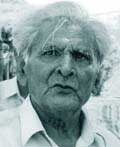| |
NETWORKING |
|
| Strengthening the water bond Continuing wisdom Meet some of them... Their impressions Water warrior speak out |
||
FUNDING AGENCY |
||
| Danida watershed development programme (DANWADEP )
India |
||
INITIATIVE |
||
| Little Wonders |
||
REMEMBERING |
||
| The magician without a wand |
||
TRADITION |
||
| Legacies of the past Venishing Madakasr |
||
RESEARCH PAPER |
||
| Cholistan's story |
||
SEE IT TO BELIEVE IT |
||

| Vol. 3 | No. 2 |
April 2001 |
Little wonders
A sustainable livelihood is defined as the ability of an individual/family to meet
their basic needs in a manner that is dignified but does not undermine the natural
resources. Working with this vision to community development, placing importance on
fostering social upliftment and promoting sustainable use of natural resources,
Development Alternatives (DA) facilitated the construction of about 100 check dams in
Bundelkhand. The Bundelkhand region was densely forested till the late 18th century. After
the turn of the century, rising demands for
wood and agricultural expansion led to increasing levels of deforestation. Today
Bundelkhand falls under the semi- arid zone. DA identified water scarcity augmented by
deforestation, soil erosion and rapid population growth leading to unsustainable use of
natural resources as one of the factor to poor agricultural yield in the region. In 1989,
when the project on check dams was envisaged, most agriculture was single–crop and
rainfed with supplementary water from private open irrigation wells. Throughout the year
there was acute shortage of water for agricultural and domestic use. As compared to
largescale high-tech approaches,
check dams were recognised as the "appropriate technology" for water management
in the poor rural dryland areas of Bundelkhand.
Check dams are small barriers built across flow shallow rivers and streams for water harvesting. These dams retain excess water during the monsoons in the catchment area behind the structure which in turn recharges the underground aquifers. The cost of irrigating one hectare of land using a check dam is between Rs 5,000 – Rs 8,000 as compared to a large dam and canal network that costs much above Rs 2 lakh. The initial investment in a check dam can be recovered in one or two seasons through the ensuing increase in the yield. Also, unlike large dams and other large-scale irrigation projects, the technology, skilled labour, financial resources and maintenance needed for the check dams are relatively nominal, making them more accessible to poor farmers.
An assessment study on the outcomes of the project suggests that the check dams have helped to reduce poverty and improved the overall quality of life. This was accomplished by increasing access to irrigation by creating more employment in the beneficiary villages. As reported by the villagers, formerly barren lands have now been brought under irrigation as a direct result of the water available from the check dams.
For further information:Barbara Rawlins
Development Alternatives
1077, Civil Lines, Jhansi 284001
Tel: 0517-444102
Remembering: The magician without a wand
A leading soil conservationist at the Soil and Water Training Institute, Chandigarh, Mishra spent most of his years converting Sukhomajri and villages of Palamau from drought-prone, poverty-stricken villages to self- sustainable units of prosperous economic activity. When Mishra embarked on the Sukhomajri project early 1970s, the village was riddled with ecological problems. The land was sparsely vegetated and could sustain only very poor crops. Soil erosion caused heavy runoff and soil loss. Even though the region had an adequate 1,100 mm of rainfall, groundwater levels were low. According to villager Hari Krishan, who had come to Delhi to attend the service, "Before Mishra came to work with us, we were only concerned about individual livelihoods. He taught us that preserving the forest would be beneficial. So unlike before, when the forest officials would have to keep us out with barbed wires, we decided ourselves not to steal wood from the forest." In 1979, when the nation was facing a severe drought, the villagers of Sukhomajri built small tanks to capture the rainwater and agreed to the concept of ‘social fencing.’ By social fencing the villagers agreed to restrain their livestock from grazing on the degraded forestlands. As a result the village of Sukhomajri today possesses a forest estimated by the forest department to be worth Rs 90 crore. The transformation of Sukhomajri from a barren land into a green belt was part of a process of a cyclical mode of sustainable development called the chakriya vikas pranali. The goal of this cyclical mode of development is to create a management system to protect, harvest, market and share the usufructs of commonly-pooled, privately owned land resources by the user group, irrespective of class, gender, religion or caste. The village of Sukhomajiri showed that it is possible to reverse land degradation. Anil Agarwal, chairperson, CSE speaking on the occasion said, "Mishra’s works have actually eradicate poverty in various pockets of the country. In the context of the present drought stalking a large part of the country his work assumes great significance. The Indian policymakers and planners have a lot to learn from the Sukhomajri watershed experiment." To reach Sukhomajri , you have to go from Chandigarh to Pinjore from where it is approximately 7 km away. |
 The Centre for Science and Environment (CSE) organised a
meeting on April 20 to condole the death of one of India’s pioneering
environmentalists, Parasu Ram Mishra. Mishra, who was the father of the Sukhomajri
experiment passed away on March 25 in Palamau, Jharkhand.
The Centre for Science and Environment (CSE) organised a
meeting on April 20 to condole the death of one of India’s pioneering
environmentalists, Parasu Ram Mishra. Mishra, who was the father of the Sukhomajri
experiment passed away on March 25 in Palamau, Jharkhand.